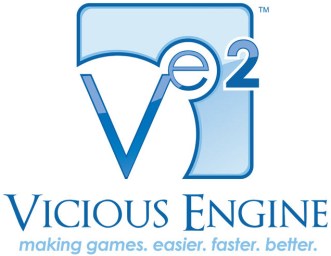
This new game-making tool will be available at the Game Developers Conference in March, and will enable game developers to create games for the PC, PlayStation 3 and Xbox 360 at the same time, using advanced graphics technology. Its aim is to make the process of creating games easier and less expensive. That’s important to a lot of western game publishers, who saw big revenue increases in 2008 but lost a lot of money due to rising game development costs.
[aditude-amp id="flyingcarpet" targeting='{"env":"staging","page_type":"article","post_id":104433,"post_type":"story","post_chan":"none","tags":null,"ai":false,"category":"none","all_categories":"games,social,","session":"D"}']It remains to be seen how much impact the engine will have. There are more successful game engines in the market, like Epic’s Unreal Engine 3 technology, used to make hardcore console games. There are also fledgling tools like the Blade 3D engine being developed by Blade Games. Other rivals include Gamebryo from Emergent Game Technologies and Crytek, maker of the Far Cry series of games and the Cry Engine.
AI Weekly
The must-read newsletter for AI and Big Data industry written by Khari Johnson, Kyle Wiggers, and Seth Colaner.
Included with VentureBeat Insider and VentureBeat VIP memberships.
Eric Peterson, chief executive of Vicious Cycle Software, said there are no changes expected under the ownership of Namco Bandai. He said that the tool is aimed at getting everyone on a game design team — programmers, artists, sound experts, etc. — working with the same software. It’s not an easy thing to do. Electronic Arts bought Criterion Studios so EA’s studios could use the RenderWare game engine across a bunch of games, but that didn’t work out so well.
Yet engines are crucial to the modern game business. Ubisoft has been successful in using the same engine across its series of Tom Clancy and Assassin’s Creed games, allowing it to amortize research and development costs across a lot of games.
Vicious Cycle Software is working on its own game, Eat Lead: The Return of Matt Hazard, as a way to test the new engine. That’s not a bad strategy, but it means that the company’s new engines become available for other customers fairly late in the game.
Vicious Cycle Software has 60 employees in Morrisville, N.C. The company expects that it will release a third engine in a few years that will be timed for the next generation of game consoles expected around 2011 or later. Eat Lead will debut on March 3.
Please check out our GamesBeat 09 conference on March 24.
VentureBeat's mission is to be a digital town square for technical decision-makers to gain knowledge about transformative enterprise technology and transact. Learn More
